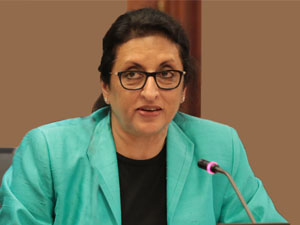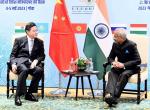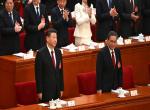Hectic preparations are underway for the forthcoming visit of US President Barack Obama to India later this month where he will be the Chief Guest at the Republic Day Parade. This visit, like Prime Minister Narendra Modi’s visit to the US in September 2014, will be extremely high in optics especially as there are many firsts to the visit – the first time ever that a US President will be the chief guest at India’s Republic Day and the first ever also for an incumbent US President to visit India twice during his term in office. The significance of the invitation to Obama is deeply appreciated but the United States obviously expects that there would be some substantive strategic announcements during Obama’s visit which will give a fresh impetus and sense of strategic direction to the future trajectory of US-India relations. During his earlier visit to India in November 2010, President Obama, in his address to the Indian Parliament had stated that the Indo-US relationship will be “one of the defining partnerships of the twenty-first century,” rooted as they are in common values and interests. It is therefore natural for Obama to aim at leaving a lasting legacy in foreign affairs through this visit in the last two years of his Presidency.
Coming barely four months after Modi’s extremely successful visit to the US, Obama would logically like to carry the momentum forward and work towards “specific deliverables to realise the true potential of India-US strategic relationship in the 21st century”1thereby sending a strong message about the great value he places on the partnership with India. While five key areas, which include trade and economic links, Energy and Climate change, Defence and Global issues, form the basis of the US-India Strategic Dialogue and were also mentioned in the Modi-Obama Joint Statement of September 2014, given the global security architecture, common threats and challenges that confront us, and India’s own considerable plans for defence modernization, Defence and High Technology agreements will, as expected, get more attention during Obama’s forthcoming visit.
Background
Despite very tentative beginnings, US-India defence ties have continued to grow through the decade of the 1990s, beginning with the 1991 visit to India of Lieutenant General Claude M Kicklighter, the then Commander-in-Chief of the US Army Pacific Command. The so-called Kicklighter proposals were described as the key element in transforming India-US defence relations. The proposals comprised service-to-service exchanges and expansion of the defence cooperation framework: steering groups were established among the three services within both countries to intensify military-to-military cooperation. The Kicklighter proposals made it possible to hold the first ever joint military exercises between India and the United States in February 1992. This was in keeping with the US policy of “cooperative engagement” with the militaries of friendly countries. Another major achievement in Indo-US defence ties was the US Defence Secretary William Perry’s visit to India from 12 to 14 January 1995. Perry and the then Indian Minister of State for Defence, Mallikarjun, signed the first Agreed Minute on Defence Cooperation, aimed at strengthening as well as expanding defence cooperation to meet the requirements of the new post-Cold War world.2
While much progress was made in holding regular joint military exercises, and the US has emerged as the biggest supplier of weapons to India, various matters like Defence co-production did not meet expectations. Matters stalled over the issue of transfer of high technology weapons due to stringent US export control legislation. While India took a big step in 2009 by agreeing to certain clauses of the End User Monitoring Agreement (EUMA), problems remained due to India’s reluctance to sign the Communications Interoperability and Security Memorandum of Agreement (CISMOA) and the Basic Exchange and Cooperation Agreement for Geo-spatial Cooperation (BECA).
Current Scenario
However in 2012, describing defence cooperation with India as the “lynchpin” of the US’ re balance strategy that focuses on the Asia-Pacific region, US Defence Secretary Leon Panetta said “America is at a turning point. After a decade of war, we are developing a new defence strategy — a central feature of which is a “rebalancing” toward the Asia-Pacific region. In particular, we will expand our military partnerships and our presence in the arc extending from the Western Pacific and East Asia into the Indian Ocean region and South Asia.”3 Panetta further announced that the three defence pacts that his predecessor (Robert Gates) insisted on were now off the table. Panetta said he has also asked the Pentagon to cut red tape that was holding back arms sales to India.4
Unfortunately, US-India relations hit a rough patch during 2013-14 and things began to look up only after a new Government assumed office in New Delhi in May 2014. On his visit to India in August, the then US Defence Secretary, Chuck Hagel announced that the US would take definite steps to energise the Defence Trade and Technology Initiative (DTTI), announced by Leon Panetta in 2013. The aim of the DTTI was to shift India defence relations from a buyer-seller relationship to one involving co-production and co-development. It said the "closest partners" would collaborate in "defence technology transfer, trade, research, co-development and co-production for defence articles and services, including the most advanced and sophisticated technology."
US Expectations
In the bilateral arena, therefore, US would like to see a more expanded participation, with a sustained and a higher level commitment to move forward on the strategic partnership from India’s MOD. While interacting with the strategic community in New Delhi in December 2014, a senior US Department of Defence official stated that there has been a perceptible shift in policy and in the way the US now views India, India’s defence offsets policy is seen as a major hindrance towards enhanced defence cooperation. This is one of the major factors why the DTTI has not worked efficiently. There have been two meetings between US and India Defence officials since Chuck Hagel’s August 2014 visit to India and the US hopes that some significant announcement can be made under the DTTI during the Obama visit. US Under Secretary of Defence for Acquisition, Technology and Logistics Frank Kendall, who has been tasked to lead the US side on discussions on DTTI, visited India in November and the US hopes to get at least two projects across the “finish line” before the Obama visit. The Pentagon has apparently given license approval for the co-production of two projects and even set aside USD 20 million for strategic co-operative science and technology projects with India, something the US has not done with any other country. Without giving details about the two licenses approved5 by the Pentagon, it was conveyed that these projects would fit in with Modi’s vision of “Make in India” but to implement the Indian PM’s positive vision for India, the Indian bureaucracy must shed its inertia and overcome the lack of strategic knowledge amongst the civilian staff in the DRDO and the MOD.
A key deliverable will be the signing of a new 10-year defence framework that will replace the existing agreement of June 2005. Apparently, this agreement is “all but done” and awaits a final clearance. This Framework will outline the modicum of exchanges on various aspects like upgraded military and naval exercises between India and the US, looking at ways to move forward on the DTTI, holding of regular meetings between US and Indian Defence officials and furthering ‘knowledge partnerships’ between the National Defence Universities in both countries. The Defence Framework will however remain a lackluster document if definitive steps are not taken to give it more teeth by laying out positive “Next Steps” in the document to actually escalate defence cooperation through an agreement for co-production of one or two weapon platforms.
Concluding Observation
India-US relations are still a work in progress, and the two nations have not been able to achieve the full potential of their partnership. There is some “strategic distrust” that is evident between our policy elites. Though we have come a long way since the low point in our relations witnessed in 1971, leaders in both countries would need to display immense “statecraft” to nurture and strengthen this relationship. There seems to be a lack of vision and commitment on both sides as President Obama has been more preoccupied by other more pressing matters. To India, the United States seems too transactional and there remains a residue of substantial mistrust towards the United States that often forces the Indian government to be cautious on something new like a security relationship with the United States, a caution that in turn frustrates the US as this delays or even stymies initiatives. It is in India’s own interest to put in place a long-term framework for India-US strategic partnership, and to add value to that partnership in all of those areas that are critical for India’s own economic and strategic advancement.
End Notes
- Lalit K Jha, “Why Obama Promptly accepted Modi’s R-Day invite,” 5 January 2015, available at : http://www.rediff.com/news/report/why-obama-promptly-accepted-modis-republic-day-invite-india/20150105.htm
- For details see, Harinder Sekhon, New Directions in US-India Relations, in MK Rasgotra, ed., The New Asian Power Dynamic, Sage, New Delhi, 2007.
- Sujan Dutta, US plucks defence thorn in India side: Three pacts Antony opposed are off the table, available at - http://www.telegraphindia.com/1120607/jsp/nation/story_15580241.jsp#.VKud1smMFnI, accessed on 6 January 2015.
- Ibid.
- According to media and other sources, India and the U.S. are negotiating a deal for the purchase of high altitude, long endurance (HALE) Unmanned Aerial Vehicles (UAV) and perhaps an announcement confirming this would be made this month when US President Barack Obama visits India. Another item on the agenda could be an announcement for the acquisition of an Artillery gun as India’s Defence Acquisition Council recently cleared the INR 157 billion (about $2.56 billion) proposal to buy 814 mounted 155mm artillery guns. However, for this a fresh RFP has to be issued, with “Buy and Make in India” terms that allow foreign partnerships.
Published in Vivek: Issues & Options, November - December 2014
(Disclaimer: The views and opinions expressed in this article are those of the author and do not necessarily reflect the official policy or position of the Vivekananda International Foundation)










Post new comment